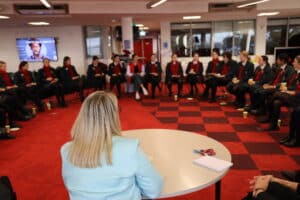Exploring Electricity With The Year 9s
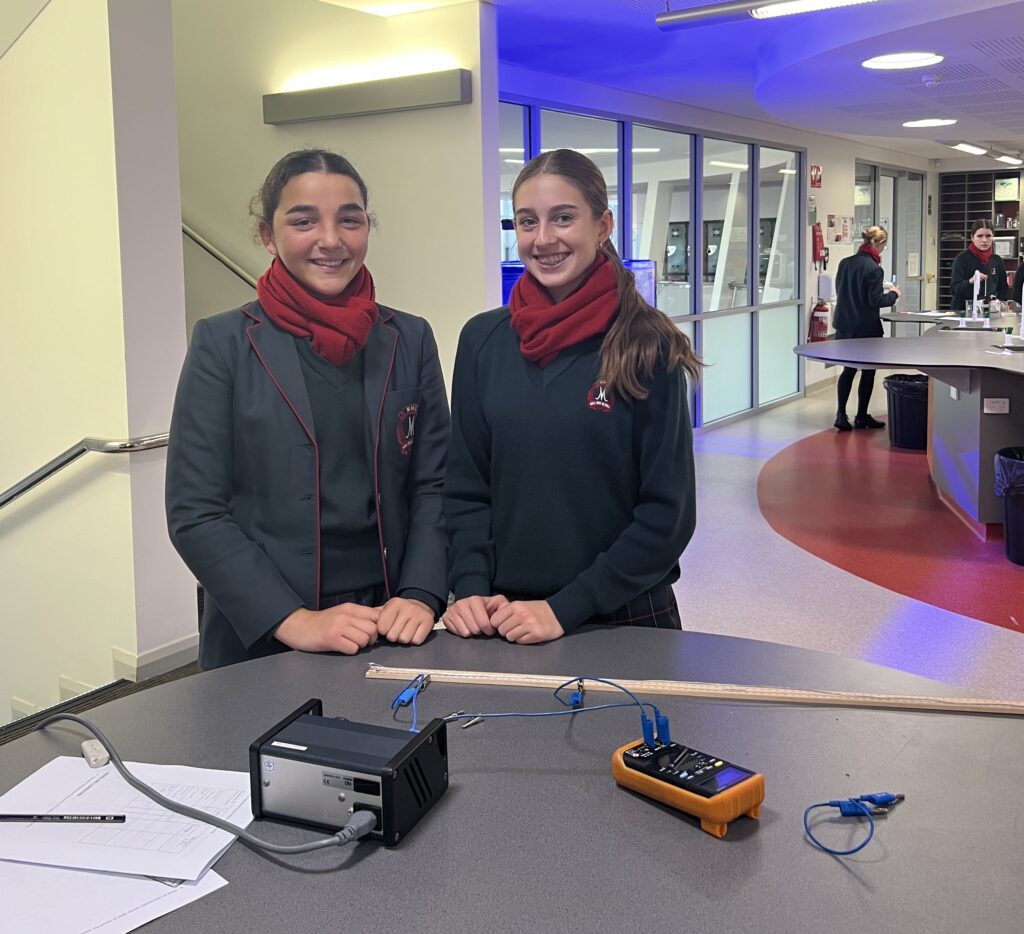
Embarking on an electrifying journey, our Year 9 students immersed themselves in the fascinating world of electricity and further understanding series and parallel circuits.
During their investigation, the young scientists examined how the thickness of a wire influences its resistance. Through precise measurements of current under specific voltage conditions, they applied Ohm’s Law (V=IR) to calculate resistance, a crucial step in understanding electrical conductivity.
Using graphs to illustrate their findings, the students analysed the data, uncovering the subtle yet impactful relationship between wire thickness and resistance. This journey illuminated the fundamental principles of electrical engineering.
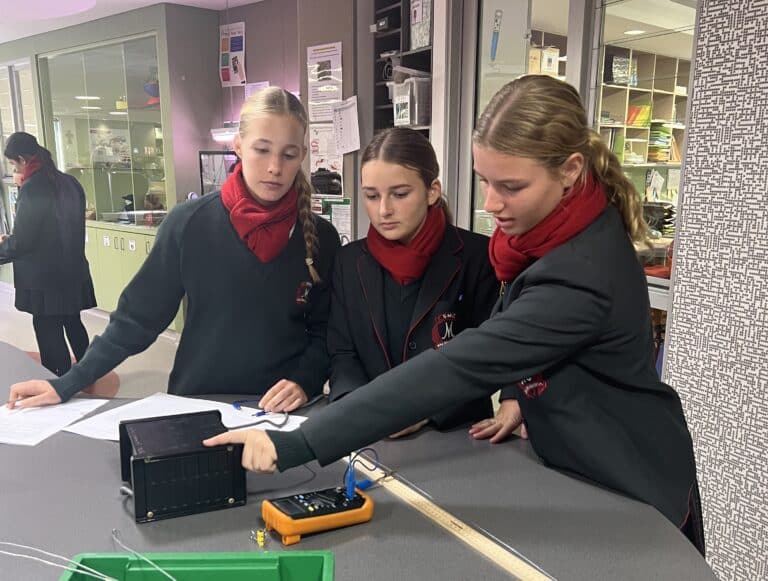
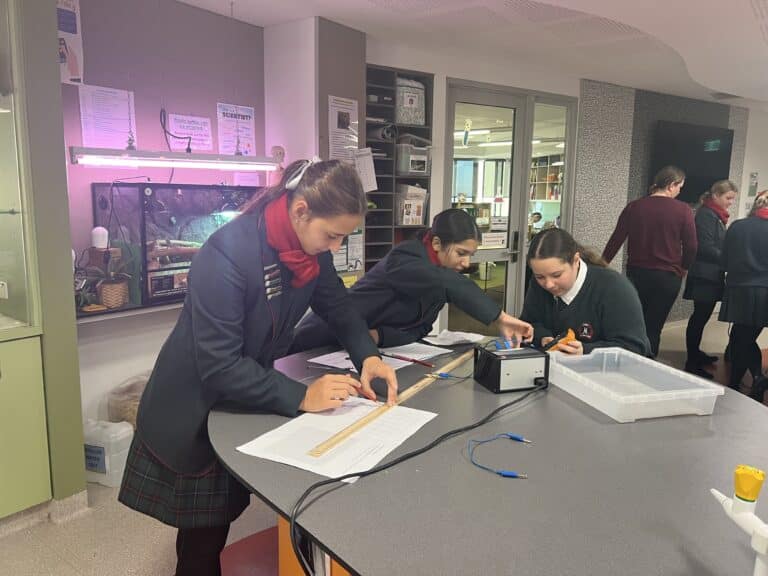
Engaging in scientific experiments helps our students develop critical thinking, curiosity, and confidence. Through hands-on experimentation, our students develop crucial skills such as analytical abilities, resilience, perseverance, and overcoming challenges, all contributing to their personal growth.
We asked students Sofia and Madelyn to share their insights.
What were some of the steps you took to ensure accurate measurements and data collection?
We controlled many variables during our experiment, including the voltage and the equipment we used. This ensured the reliability of our data. We conducted three trials for each wire and recorded the results in a table.
How did graphing your results help you to understand the relationship between wire thickness and resistance?
Graphing our results helped us to interpret data patterns and determine whether our hypothesis was supported. We discovered a trend where the thicker the wire, the more amps were measured. This meant that thicker wires had a lower resistance due to a wider diameter and the increased ability for the electrons to flow.
What aspects of this experiment did you find most interesting?
We liked the hands-on part of this experiment as it was very engaging, and we felt we were able to learn and participate more by conducting the investigation ourselves.
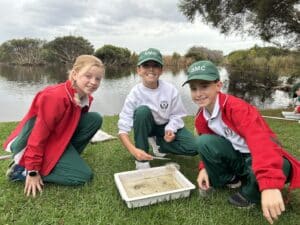
Fearless5: Unleashing Potential Through Innovation
Explore how Santa Maria’s Fearless5 project is shaping future environmental champions through innovative and empowering education

Embracing Diversity with Refugees: Year 12 CFC
Year 12 CFC students developed literacy activities with refugee children at the Beaconsfield Intensive Language Centre.

Sustainable Fashion With Year 9s
Our Year 9 Fashion students embraced sustainability by visiting op shops and purchasing pre-loved items to upcycle.
- Analytical Skills, Critical Thinking, Featured
Author: Santa Maria College
Santa Maria College is a vibrant girls school with a growing local presence and reputation. Our Mission is to educate young Mercy women who act with courage and compassion to enrich our world. Santa Maria College is located in Attadale in Western Australia, 16 km from the Perth CBD. We offer a Catholic education for girls in Years 5 – 12 and have 1300 students, including 152 boarders.


